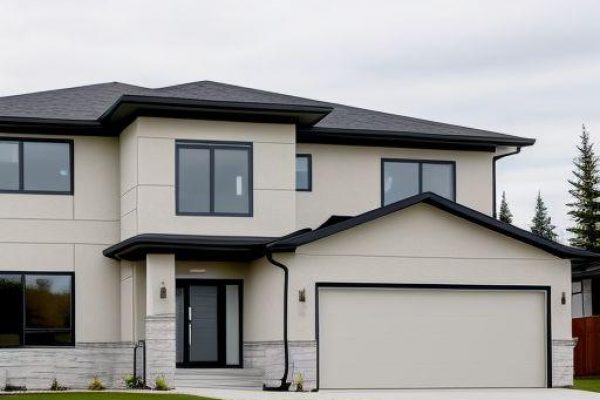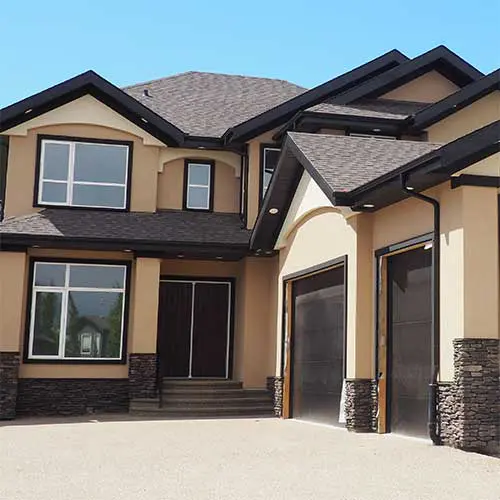
Is Painting Over Stucco Worth It? Tips and Tricks for a Flawless Finish
Introduction
When it comes to home exteriors, few surfaces are as iconic as stucco. Its textured finish can be charming, but over time, even the most beautiful stucco can lose its luster. If you're contemplating whether to give your stucco a fresh coat of paint, you might wonder: Is painting over stucco worth it? This article dives deep into the world of stucco painting, exploring its benefits, challenges, and techniques to ensure a flawless finish.
Is Painting Over Stucco Worth It?
Painting over stucco isn't just about aesthetics. It's about enhancing your home's curb appeal, protecting the surface from environmental elements, and potentially increasing property value. But is it really worth the investment of time and resources? Absolutely! Here are several reasons why:
The Aesthetic Appeal
Stucco can fade or discolor over time due to sun exposure and weather conditions. A fresh coat of paint can revitalize your home's appearance in an instant.
Protection Against Elements
Stucco is porous by nature, which means it can absorb moisture if not properly sealed. Painting adds a layer of protection against rain and humidity.
Increased Property Value
A well-maintained exterior improves curb appeal and can lead to higher property values.
Versatility in Design
With endless colors available, painting allows homeowners to express their style more flexibly than with traditional stucco finishes.
Understanding Stucco: The Basics
To understand how to best approach painting over stucco, it's essential first to grasp what stucco is and how it functions.
What is Stucco?
Stucco is a mixture of cement, sand, lime, and water that creates a durable exterior finish. Its texture offers not only aesthetic beauty but also stability against various weather conditions.
Types of Stucco Finishes
- Sand Finish: A smooth texture created by applying sand with the final coat.
- Dash Finish: Applied in a rough manner creating protrusions.
- Slick Finish: Combines smoothness with elegance; often used for modern aesthetics.
Evaluating Your Stucco Condition Before Painting
Before you roll up your sleeves for some serious home improvement work, assessing the condition of your existing stucco is crucial.

Signs Your Stucco Needs Attention
Conducting a Thorough Inspection
Inspecting your stucco should be methodical:
- Check for cracks: Use a flashlight to spot hairline fractures.
- Look for damp spots: These could indicate water damage.
Prepping Your Stucco Surface for Paint Application
Preparation is key when it comes to achieving that flawless finish everyone dreams about.
Cleaning the Surface
Start with power washing your stucco. This removes dirt, mold, and old paint—essentially giving you a blank canvas!
Steps for Power Washing:
Repairing Damaged Areas
Fill any cracks with elastomeric caulk or patching compound designed specifically for stucco repair.
Repair Checklist:
- Remove loose chunks
- Apply patch material
- Smooth out excess
Choosing the Right Paint for Stucco Surfaces
Not all paints are created equal when it comes to painting over stucco!
Types of Paint Suitable for Stucco
Color Selection Considerations
When selecting colors:
- Lighter shades reflect heat better than darker ones.
- Opt for colors that complement your landscape.
Tools Needed for Painting Over Stucco
Gather these essential tools before starting your project:
| Tool | Purpose | |------------------|--------------------------------| | Paintbrush | For edges and touch-ups | | Roller | For large flat areas | | Spray Gun | Ideal for textured surfaces | | Ladder | Reach high areas |
Application Techniques: Mastering the Art of Painting Over Stucco
This part's where things get exciting! Let's dive into techniques that will help you achieve that stucco painting tips professional look at home.
1. Starting with Primer
Priming helps paint adhere better while sealing any imperfections in the surface.
How to Apply Primer:
- Use an airless sprayer or brush/roller combo.
- Allow primer to dry completely before moving on (typically 24 hours).
2. The Right Method of Application
Choose between rolling or spraying based on texture:
Rolling Technique
Rollers work well on smoother surfaces but may require additional effort on textured surfaces.
Spraying Technique
Sprayers can cover textured areas more evenly but may require practice!

Finishing Touches: Ensuring a Flawless Finish
Now that you've gone through all the heavy lifting let’s talk about those finishing touches!
1. Final Coat Application
Apply at least two coats of paint after priming; again allowing proper drying time between layers.
Tips:
- Back-roll after spraying if using a spray gun—this ensures even distribution.
2. Clean Up Process
Don’t forget this critical step! Proper cleanup will keep your tools in good shape and avoid messiness around your home.
Clean-Up Checklist:
- Wash brushes immediately
- Dispose of empty cans responsibly
FAQs About Painting Over Stucco
Q1: Can I paint over existing painted stucco?
Absolutely! Just ensure you clean and prep it adequately before applying new paint.
Q2: How long does painted stucco last?
Typically between 5–10 years depending on climate conditions and maintenance levels.
Q3: What happens if I don't prime my stucco before painting?
Without primer, paint may not adhere as well leading to peeling or uneven color application down the line.
Q4: Should I use waterproof paint?
Using waterproof or moisture resistant paints is advisable especially in humid climates where water damage poses risks!
Q5: Can I do this myself or should I hire professionals?
If you're comfortable with DIY projects—go ahead! However hiring professionals might save time & guarantee quality results!
Q6: Will painting my stucco increase my energy bills?
Lighter colored paints reflect sunlight which helps keep homes cooler thus potentially lowering energy costs!
Conclusion
So there you have it! Yes, painting over stucco is indeed worth considering if you're looking to enhance both beauty and longevity while protecting this unique material from wear-and-tear! With proper preparation, quality materials chosen wisely—and employing tried-and-tested techniques—you'll achieve that flawless finish you've always dreamed about! Whether you choose DIY adventure or hire pros—embrace this exciting journey toward transforming your home’s exterior into something truly spectacular!

Now go forth confidently armed with knowledge on Is Painting Over Stucco Worth It? Tips and Tricks for a Flawless Finish! Happy painting!